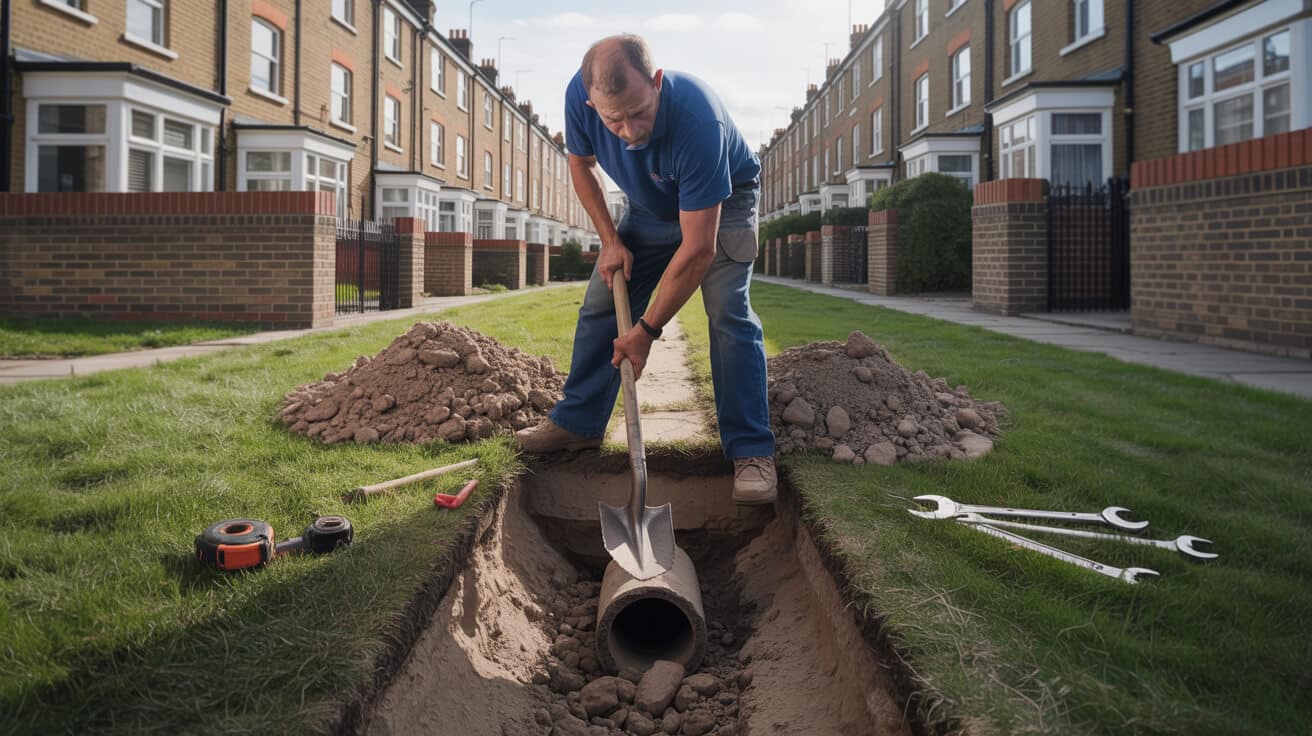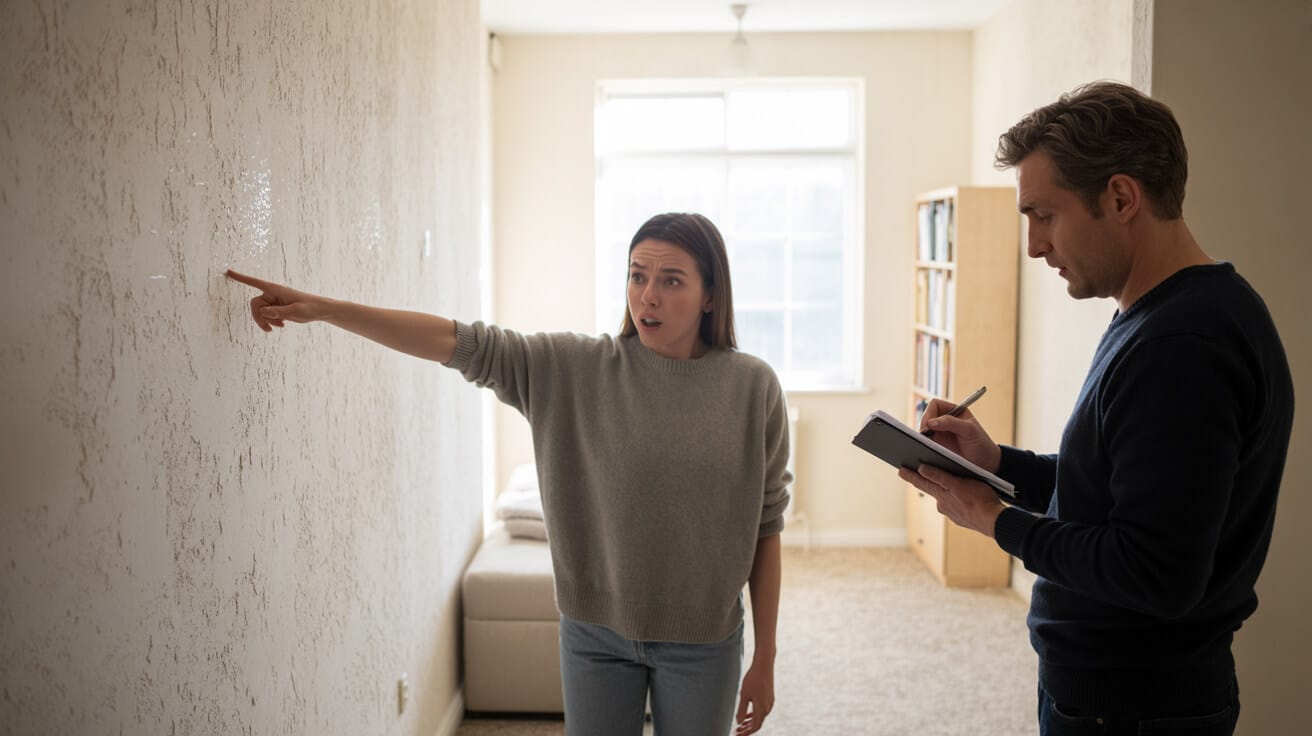 A Beginner’s Guide to Your Central Heating System’s Controls
A Beginner’s Guide to Your Central Heating System’s Controls
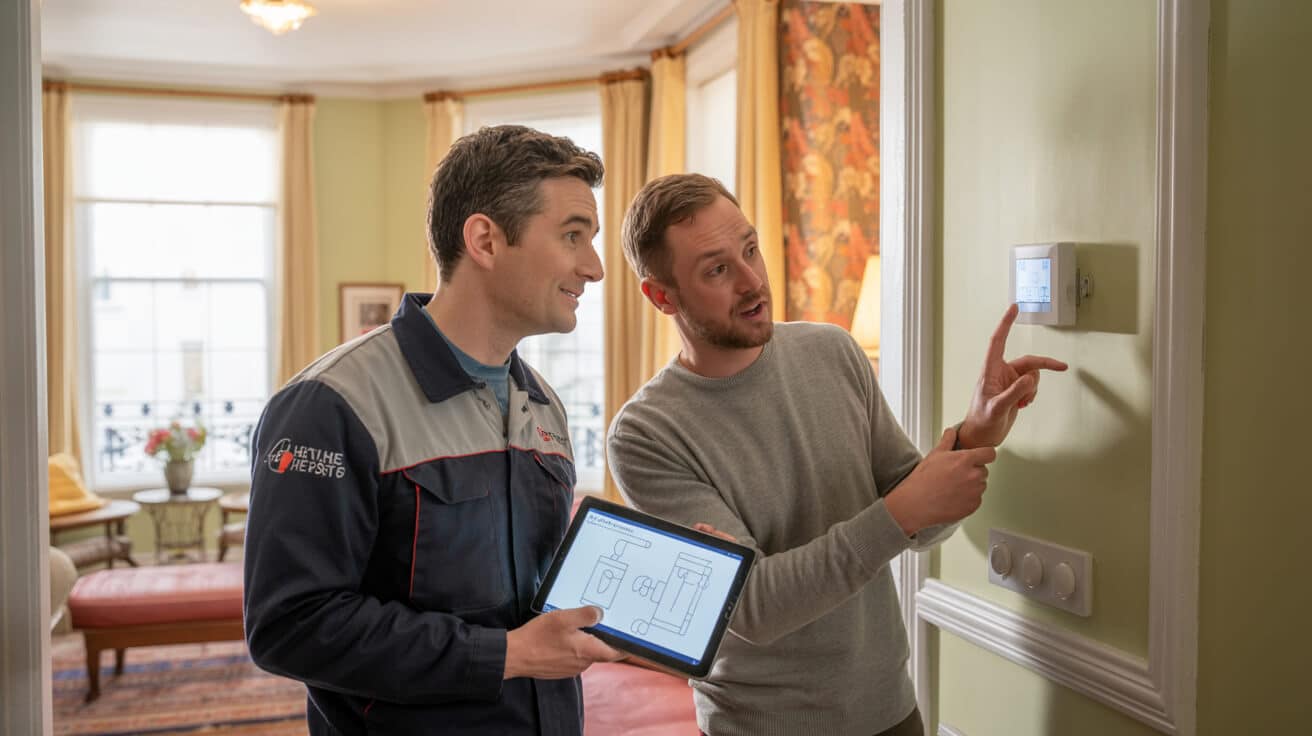
How Can Heating Controls Make or Break Your Comfort—and Your Wallet?
The gap between a home that “just feels right” and one that’s always either too cold or too stuffy? It’s often down to how your heating controls are set—far more than the boiler itself. Comfort and costs are built into your everyday system, but the lever isn’t hidden behind a toolbox or wall—it’s right there in how you use the buttons, dials, and digital brains already installed.
“A ten-minute tweak today can mean comfort and savings all winter.”
Most homes, rentals, and even commercial sites in the UK still waste hundreds of pounds a year—not because of ancient boilers, but because owners, landlords, or agents trust “default” settings, crank thermostats to the max, or leave the system running as background noise. It’s not about having smarter kit. It’s about making whatever technology you’ve got actually work for your daily routine (and, yes, for your bottom line).
Bold claims? Not here—just data. Heating controls are the most overlooked upgrade in British property. Here’s what getting them right really delivers:
- Everyday comfort: Wake up warm, get evenings that aren’t overwhelmed by “sauna syndrome”, and stop the 4pm chill in its tracks.
- Lower bills: Drop your thermostat just 1°C and you cut gas bills by nearly 10% (Energy Saving Trust).
- Landlord compliance: Current Building Regulations (Part L, 2022) require both time and temperature controls for any new or re-let property.
- No more thermostat battles: Families and shared houses get less drama when routines lock in consistent settings.
- Efficiency baked in: Properties using even basic controls save between 12% and 18% on heating (Energy Saving Trust)—well over £120/year for a three-bed home.
These are not best-case hypotheticals. They’re built into the way homes, investments, and commercial spaces survive the British winter. The question is whether you leverage those benefits, or keep guessing and hoping while your budget pays the penalty.
Which Types of Heating Controls Exist—and Where Do They Make a Difference?

Heating controls come in a spectrum from the classic, no-nonsense timer through to full AI smart stats. Each shines in different settings—and each offers a pay-off, whether your property is a family terraced in Derby or a block of rental flats in Manchester.
Timers: Reliable Foundation for Routine
Timers switch your heating (and sometimes hot water) on and off at fixed times. They’re simple, reliable, and perfect for people with regular hours—think early wake-ups and predictable evenings.
- Hands-off: Schedule in, walk away. Ideal for landlords between tenancies.
- Scenario: Heating runs 6–8am, 5–10pm—cuts the guesswork and the waste.
Programmers: Flexible Schedulers for Busy Lives
Programmers allow multiple settings throughout the week, often with independent control over heating and hot water.
- Custom fits: Set different routines for weekdays and weekends.
- Real result: Properly set, programmers cut typical bills by £70–£120 a year (Energy Saving Trust)—a bigger impact than most insulation upgrades.
Room Thermostats: The Set-and-Hold Guardian
Room thermostats read the air temperature and keep it within your preferred range.
- Why it matters: Each extra degree on the dial adds around 10% to bills (Citizens Advice).
- Pro tip: Don’t put stats near windows, doors, or direct heaters. Location defines performance.
TRVs: Localised Control, Less Bickering
thermostatic radiator valves (TRVs) enable precise temperature control for individual rooms.
- Zoning, made simple: Keep guest bedrooms cool, living spaces warm, and skip battling over one “master stat”.
- Fastest win: Instal TRVs if you haven’t; set unused rooms to ‘1’, busy ones to ‘3’ or ‘4’.
Smart Thermostats: Automation, Tracking, and Remote Discipline
smart thermostats add app control, learning schedules, and, if you want, geofencing to switch off the heat as the last person leaves.
- Savings stack up: Up to £150 per year—when set up and used as the manufacturer recommends (Octopus Energy).
- Upside for property managers: Remote set-up, usage logs for disputes, and “push-button” help for tenants or staff.
“Layering timer, thermostat, and TRV lets average controls outperform any luxury boiler left on ‘manual’.”
The real game isn’t chasing the fanciest tech, but making sure you combine the basics. Even vented cylinder and old-school boiler setups can run ring-round the “latest and greatest” by simply scheduling, zoning, and monitoring rooms so heat matches where real life happens. That’s cost, comfort, and legal security in one package.
How Does a Central Heating System Actually Work—and Where Do Controls Fit In?
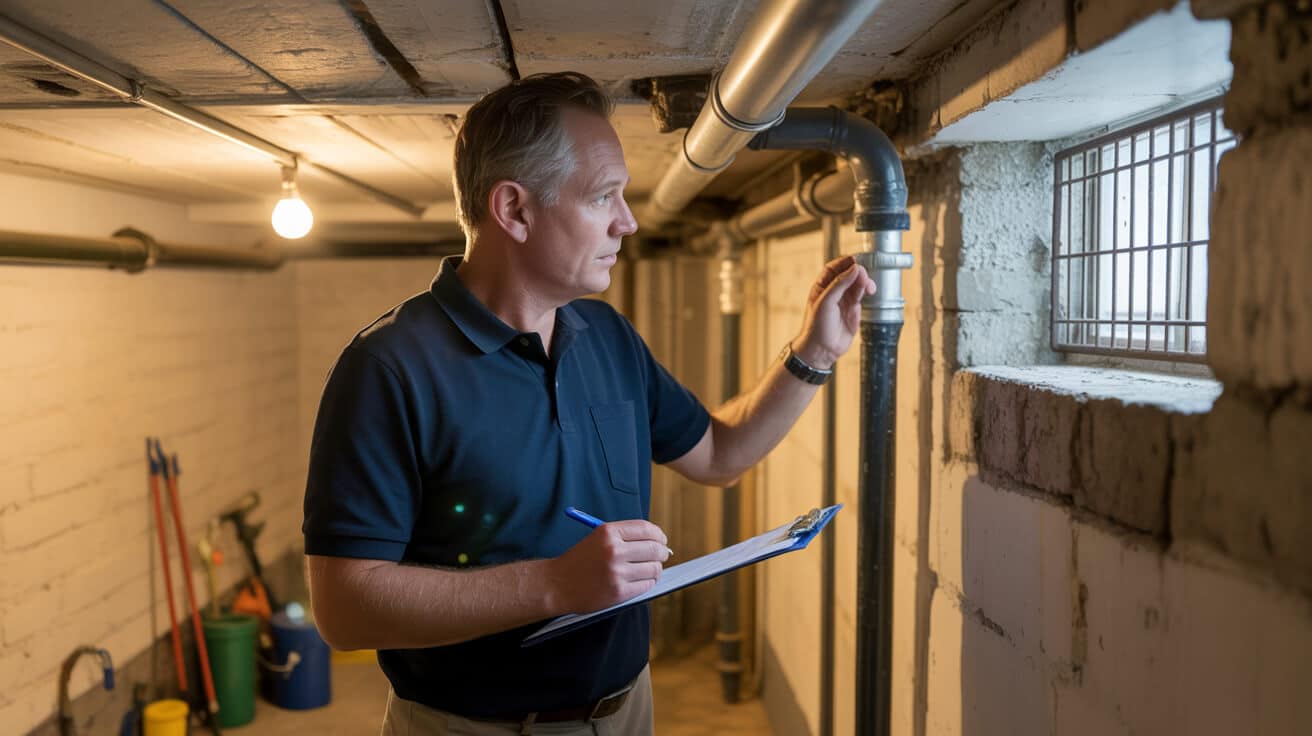
The boiler is just the heart, not the brain. Real savings and day-to-day comfort are determined by the logic chain built around it—and if you tweak the controls, the outcome changes more than if you swap out half the pipes.
Main parts of a UK heating system include:
- The heat source: Modern Condensing Boilers, but could be a heat pump or combi system.
- Distribution: Pipework sending hot water to radiators or underfloor heating.
- Emitters: Radiators, towel rails, floor loops—responsible for direct room heating.
- Controls: The “why” and “when” governing system activity.
Here’s how the controls coordinate efficiency every hour:
- Timer/programmer: Sets the ‘on/off’ blocks—slashes bills by stopping background heating in unoccupied periods.
- Room thermostat: Holds room temperature at the sweet spot. Adjusts output up or down, prevents overshoot.
- TRVs: Give each space a local override—so your spare room isn’t bleeding wallet and energy while you occupy the lounge.
- Smart stack (if installed): Ties it all together, warns you or even sends energy use reports directly to your app.
“Your heating controls exist to prevent waste, not to be ‘set and forget’. Review settings each autumn and after schedule changes for maximum benefit.”
Just changing stat location or syncing the schedule with the school run can push system performance up—no need for major replacement works.
How Can You Identify Your System’s Controls and Unlock Their Full Power?
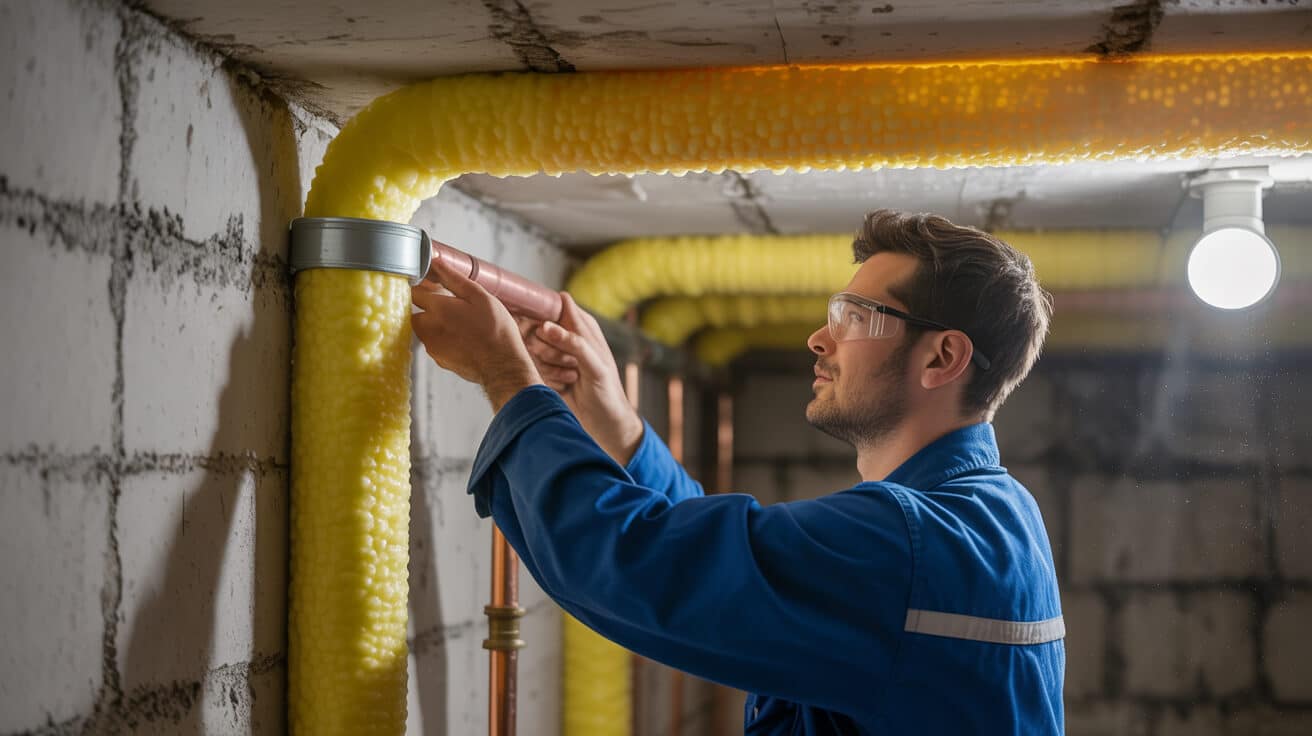
Some owners face a “Frankenstein” of old timers, misplaced thermostats, and TRVs set at random. Others inherit an app from the last tenant and pray the settings are right. Either way, the advantage goes to those who decode what’s fitted and use its best features.
Spotting Control Types
- Timers/programmers: Dial or digital box near the boiler (sometimes in the airing cupboard or utility room). These automate when heating/hot water turns on.
- Room thermostats: Commonly wall-mounted in a hallway or living zone—avoid those hidden by furniture or exposed to sudden draughts.
- TRVs: Small dials at the base or side of each radiator—mechanical for older models, display screen for digital and programmable versions.
- Smart thermostats: Wall units with Wi-Fi, screens, QR codes, or “pairing” options, plus app presence on your phone or tablet.
Your Visual Clues and Documents
- Photo helps: If you’re in doubt, a picture to your engineer, or a quick check for manufacturer icons (Energy Saving Trust, Worcester etc.) narrows down make and model.
- Instal records: Plumbers 4U always provides paperwork—EPC, WRAS, Gas Safe, G3—with specification of control types for compliance and resale value.
- End-user handover: Each job includes a walkthrough, usage sheet, or digital guide, especially for rentals/let-only options.
Unlocking Advanced Functions
- Screen messages: “Holiday,” “Zoning,” or “Learning” modes signal advanced possibilities—these features can cut wasted power.
- Interface upgrades: Colour displays or touch panels can enable features like ‘home/away’ auto switch, or usage tracking for landlords.
“A five-minute check or photo can save you years of poor performance—don’t wait until winter to get clarity.”
And if it’s unclear, professional support from a certified engineer brings sense to what’s been inherited—removing both guesswork and inefficiency for good.
What Step-By-Step Tweaks Actually Save Money and Ease Tensions?
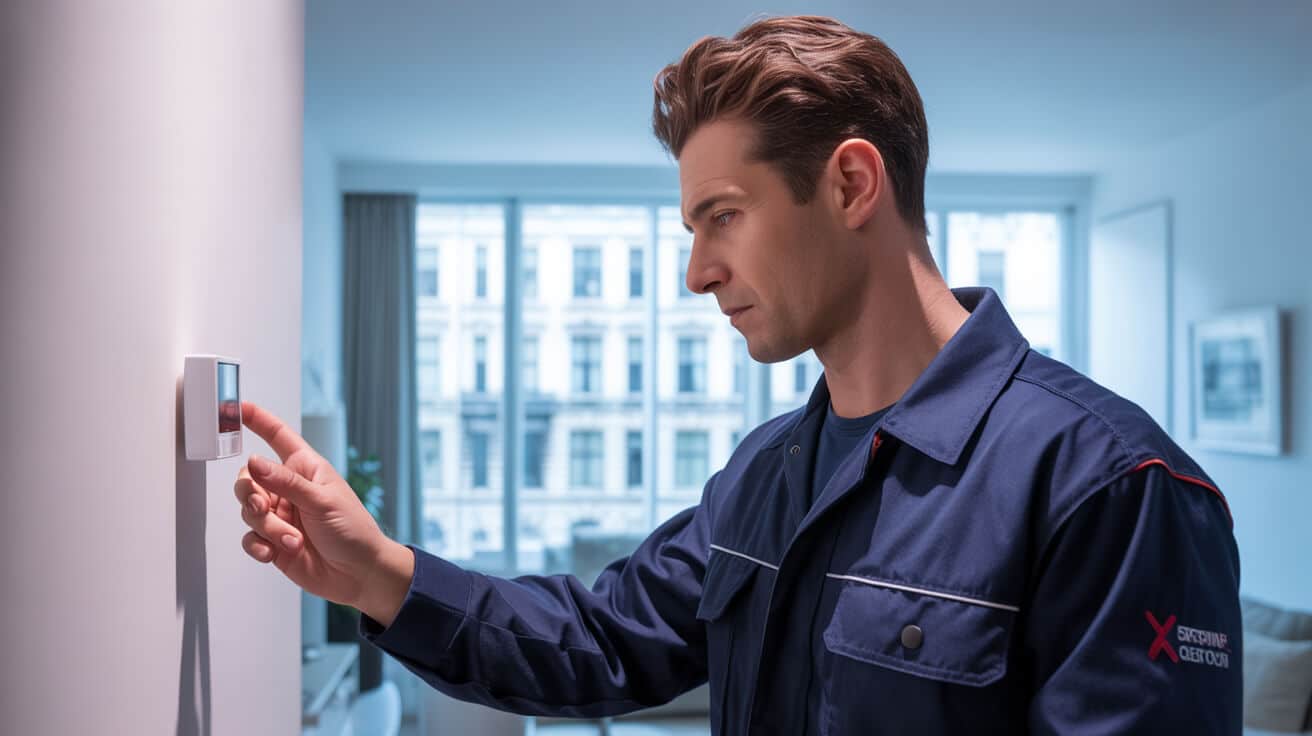
Upgrade choices get all the headlines, but nine times out of ten, it’s disciplined tweaking—not expensive instals—that create the biggest impact. Stop guessing; start running your system like a pro.
Match Schedules to Real Life—Not Just the Season
- Only heat when you’re there: Use timer/programmer periods to reflect mornings, after-work returns, and bedtime. Don’t pay to heat silence.
- Weekends are different: Set another routine for Saturday/Sunday when occupancy or activity shifts.
Dial in the Thermostat Thoughtfully
- The 18–21°C rule: For most property types, this range secures comfort but stops the “bill creep”. Each degree above this can empty your wallet a lot faster than you think (Energy Saving Trust).
- Seasonal review: Turn stats down in spring and summer, then only up by degree-increments as the cold sets in. Adjust during daylight savings for immediate impact.
TRVs: Manual, Cheap, Effective Zoning
- Unused rooms: Set their TRVs to “1” or the snowflake symbol (‘frost’).
- High-use rooms: Set between “3” and “4”; experiment for comfort, checking room-by-room.
Smart Control Routines: Set-and-Forget (Then Check Back In)
- Initial set-up: Enter day-to-day routines once, and let learning algorithms do the heavy lifting.
- Reminders and reviews: Smart thermostats sometimes need manual confirmation during clock changes or power outages—set reminders to confirm.
“Tweak, don’t replace—most comfort issues resolve with the right settings and a couple checks. Save the panic for the genuinely rare boiler faults.”
Property managers: Regularly document agreed-upon schedules with tenants. For shared houses, visible reminders reduce disputes and maintenance calls.
Why Is Legal Compliance and Energy Efficiency So Intertwined With Heating Controls?

In the era of EPC, Heat Network, and Gas Safety audits, legal compliance is not just for the sake of a certificate. It’s the blueprint for happier tenants, lower risk, and higher resale—or simply keeping the lights on for your business.
The Compliance Backbone
- Only approved kit counts: Landlords must use WRAS and WaterSafe-certified controls and valves; anything else can void insurance or fail an official check.
- Insulation is compulsory: New regs require a minimum 19mm of pipe insulation and lagging to pass EPC audits and landlord licencing (Part L Building Regulations).
- Heating controls as entry-ticket: Since 2022, letting without both time and temperature controls is a no-go for new agreements or renewals (Part L, England).
The Paperwork Trail
- Instal and upgrade signoff: You should expect (and get) digital or hard-copy compliance sheets (WRAS, benchmark, Warranty) with all new installations or major work.
- Landlord responsibilities: Each lease renewal comes with a compliance pack, and handover always includes proof of controls—missing paperwork can delay moves or incite formal complaints.
- Property sales: No control documentation halts sales progress, or worse, reduces property value during a buyer’s survey.
“Getting compliance right today is sleeping soundly for years—it’s built into Plumbers 4U’s ethos: job logged, paperwork ready, audit proof by design.”
Choosing a provider that bakes compliance into every phase—quoting, instal, handover—is the first step in avoiding headaches and extra costs down the line.
What If Something Goes Wrong? Fast Solutions for Common Heating Control Problems
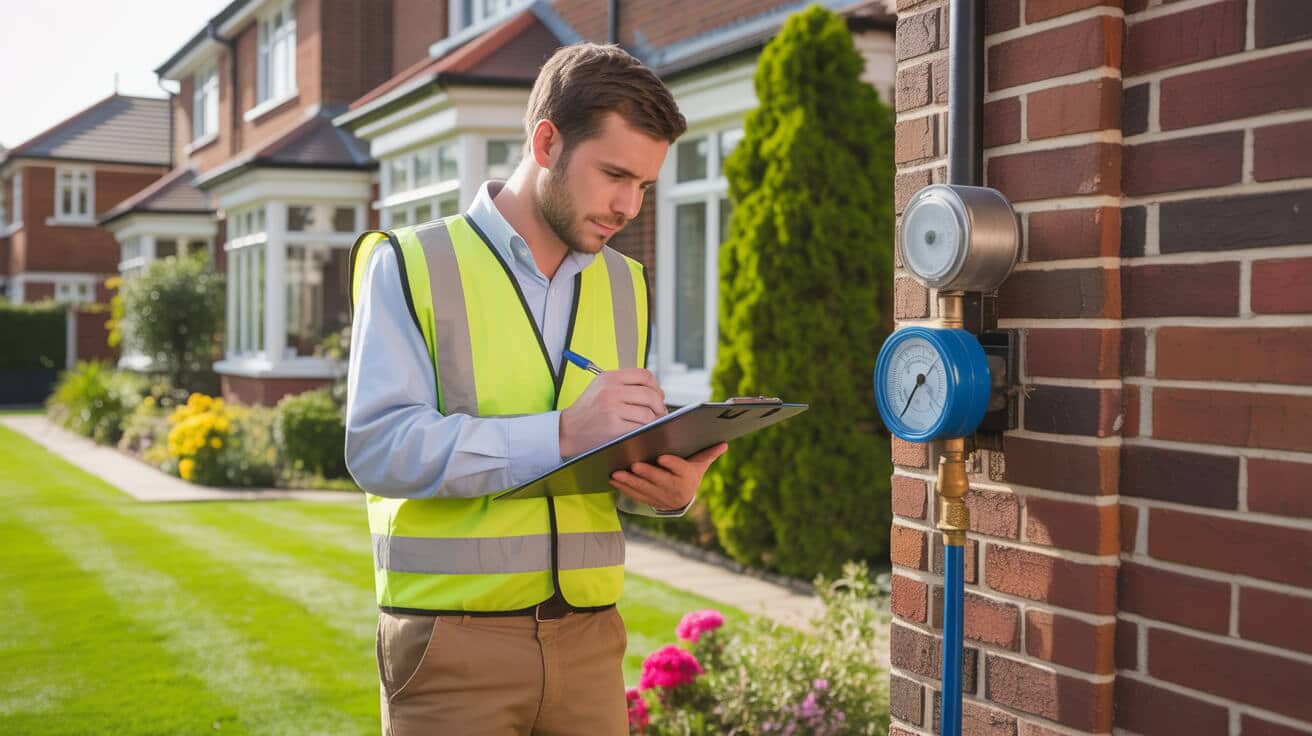
Most heating “failures” aren’t mechanical at all—they’re settings or routine maintenance. Don’t jump straight to “the boiler’s failed”—work down the checklist, and you’ll often save time, money, and avoidable callouts.
Common headaches (and what usually solves them):
- Room not warming up: Check TRVs and radiator settings; unstick by rotating through all settings.
- Heating missing scheduled times: Timer/programmer may be out of sync—replace batteries, check there’s no power cut or daylight savings mismatch.
- Smart controls offline: Reboot Wi-Fi or check thermostat batteries; confirm your app is still paired.
- Lost instruction guides: Plumbers 4U archives every handover digitally and on paper—clients never get left “guessing the buttons”.
- Tenant or owner confusion: Log and share your agreed schedule at check-in. “Cheat sheets” cut problems and arguments.
Pro tip: Schedule inspections when clocks change (spring/autumn) to update settings, swap batteries, and refresh compliance documents in a single visit.
“Real service means most callouts are solved on the first call, or not needed at all—backed up with clarity, not complexity.”
For landlords and agents: The fastest-rising bills (and stress) come from breakdowns that were preventable. Encourage early questions, share settings, and make tenant guidance every bit as reliable as the engineering.
What Sets Plumbers 4U Apart in Heating Control Installation and Support?
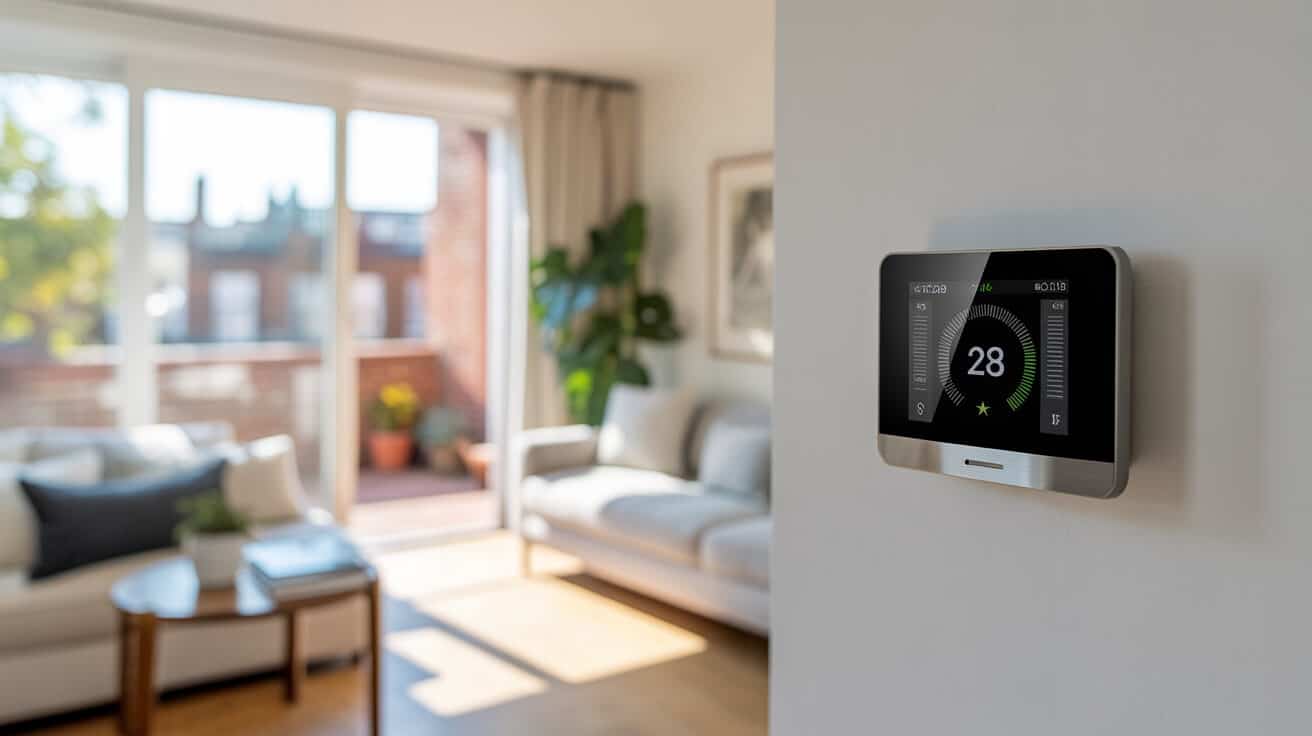
Plumbers 4U’s signature isn’t just in “fitting parts”—it’s building in peace of mind, compliance, and service that doesn’t stop at the last wire.
Why our clients—whether living in or managing a property—stick with us:
- Rock-solid accreditation: Every engineer WRAS, WaterSafe, and G3 certified; always on top of boiler, smart control, and heating system best practice.
- No-hassle handover: Expect full demo, digital handover packs, and “cheat sheets” for every job. Easy for landlords, easy for new tenants, easy for sale.
- Tailored upgrades, not upsell: Our solutions fit your use case—a three-bed terrace is not a mansion block, and recommendations prove it.
- Paperwork matters as much as the parts: We coordinate EPCs, landlord checks, and warranty certifications every step.
- Trust built in: Credentials on every engineer, before/after logs kept (especially for landlords with multiple flats/houses).
- Responsive support: Service doesn’t stop at instal—a quick phone call or message gets rapid troubleshooting, not “call out the boss”.
“Comfort is a given, but confidence and compliance are delivered—and that’s where the real value is.”
For agents, offices, landlords, and direct owners—Plumbers 4U future-proofs your heating, compliance, and comfort with singular focus and proven expertise.
Why Plumbers 4U Is the Evidence-Backed, Regulation-Proof Choice for Your Heating Controls
Best practice means nothing if it only sits in a manual. The difference between “just enough to scrape by” and “evidence that stands up to any test” is in the service mindset, follow-up, and proof.
Reasons professionals stick with Plumbers 4U for heating controls:
- Always-compliant instals: Every service calibrated to WRAS, WaterSafe, and the latest Part L regs—no box ticking, just real security.
- Field-tested (not theorised): Our advice and installation is grounded in decades of working systems, not just online guides.
- Recommendations match reality: Inputs taken from how you and your tenants use the space, not what “should work on paper”.
- Recognised by auditors and sector bodies: Installations cited by industry consumer agencies as models for clarity and audit-proven record keeping.
- Full documentation and aftercare: All instals, upgrades, and annual services come with digital and printout records and callback support—so you’re never left on your own.
With us, control isn’t just about the dial or app—it’s your comfort and cost position secured, audit after audit, winter after winter.
Book Plumbers 4U Today
When uncertainty about heating controls threatens comfort, legal security, or bottom-line costs, Plumbers 4U becomes your shortcut to simplicity. For homeowners whose bills keep creeping upward, for landlords trying to avoid regulatory tripwires, for agents tired of callout churn, our team is the step you take when you want it done right.
- All systems, all property types: Domestic, commercial, or block—no “one size fits all”, always client-specific.
- Complete handover and training: Every instal includes app demo or cheat sheet, plus digital and hard copy record.
- Compliance managed from first call: We coordinate WRAS, G3, EPC, and all related certificates—solve today, protect tomorrow.
“The best control you’ll ever have is peace of mind—Plumbers 4U makes that your default setting.”
There’s no better moment than today to leave confusion behind. Let us make your heating control a solved problem—and give you one less thing to worry about as winter draws in.
Frequently Asked Questions
Why does relying on old thermostats and basic timers limit comfort and compliance in British properties?
Outdated thermostats and standard timers operate on a “best guess” schedule—meaning your property is likely heating empty rooms or missing opportunities for savings. These old-style controls can’t respond to how your tenants’, family’s, or business’s daily rhythms actually change throughout the week. Not only does that waste energy, but it leaves owners and landlords out of step with the latest regulations. The new wave of MEES and Part L requirements expect adaptive, evidence-based controls that prove you’re not running your system on autopilot.
Modern programmable and smart stats enable you to set zones and times for each room, maximising efficiency by only delivering heat exactly where and when it’s needed. That translates into less bickering over bills, faster EPC improvements, and—according to the Energy Saving Trust—annual savings that top £200 across mixed-use portfolios. App-enabled models give landlords and managers live adjustment and compliance tracking, closing loopholes that legacy kits simply can’t match.
“If your heating is still relying on a ‘one size fits all’ dial, you’re burning money while risking audit headaches—now is the time for controls that flex with real life.”
Plumbers 4U conducts hands-on upgrades and compliance walkthroughs, setting up each control to tailor warmth and savings, as well as logging documentation for rentals, resale, or insurance. Instead of guessing, you’ll know exactly how every stat and timer delivers value and legal security.
What functionality do smart controls add beyond legacy timers?
- Zoning: individual schedules per floor, space, or office
- Remote/app adjustment for emergency shutdowns or tenant complaints
- Historic usage tracking for EPC and grant submissions
- Compliance evidence: automatic records and upgrade logs
Take action now and your property works for you—not the other way around.
Which pitfalls do most people face after installing smart or programmable heating controls—and how can owners avoid them?
The shock comes when upgraded controls underperform—not because of bad equipment, but because people fall into traps that waste energy and create hassle. The most common missteps: setting the whole property to “comfort” temperatures 24/7, overlapping TRVs with wall thermostats in the same space, and failing to update timer programmes for changes like daylight saving or tenancy turnover.
Confusion also grows when guests, tenants, or staff override programmed settings for “one-off” comfort, but never reset. This causes schedules to drift, conflicts between controls, or rooms left heating all year. Commercial properties and managed flats suffer when multiple users fiddle with controls, meaning energy use surges and no audit trail exists if compliance is checked.
“The most expensive heating system is the one nobody re-checks—left alone, even smart controls will default to comfort in all rooms, at all times.”
Landlords and agents need systems that log who set what and when, especially under the current BS EN 60730 standard for accurate scheduled comfort. Modern smart stats have “lockout,” “holiday/away,” and audit functions to help, but only if set up from day one.
Five easy mistakes—and how to fix them fast
- Leaving system on “all day” or “constant”: Check and set weekday/weekend split schedules in your app or programmer
- Overlapping controls: Never put a TRV and a main room stat in the same zone—engineers can redesign for balance
- Neglecting to recalibrate for new tenants or seasons: Schedule biannual checks and use holiday/away modes
- Failing to label controls: Name each stat, TRV, and app zone; send a cheat sheet to users or tenants
- No documentation: Save setups, logs, and photos so you can restore defaults or defend compliance at any time
Plumbers 4U offers ongoing audits and coaching, meaning every control runs at its best no matter how often tenants, seasons, or business schedules shift.
How does scheduling heating by real occupancy and usage deliver savings over “set and forget” habits?
Schedules that mimic real-world use don’t just shave pennies—they unlock hundreds in annual savings for homes, landlords, and business sites. The statistics tell the tale: a control system running “7am to midnight” for a property empty much of the day is common but needless. EDF’s 2024 findings show that simply aligning start/stop times with real living, work, or letting patterns delivers up to £150–£300 savings per year, depending on property size.
Even more is lost when setpoint temperatures creep upward through “quick boosts” or are never reset after a cold snap. Energy Saving Trust research confirms each degree above 18–21°C costs another 10% on heating bills. Not to mention spare rooms, offices, or unoccupied spaces heated “just in case”—these are silent money drains, yet a simple use of “frost protection” or “eco mode” trims out pointless spend.
“Every room that’s warm but empty is money and compliance thrown away—smarter schedules serve people, not empty walls.”
Landlords face further pressure: letting properties without modern, efficient controls now risks EPC penalties, lost tenancies, and unlocked grant opportunities. Even if you don’t instal new kit, a single audit and rescheduling saves far more than it costs.
Occupancy-based scheduling: simple steps, rapid wins
- Identify each zone’s real use across the week—bedrooms, lounges, kitchens, offices, commercial spaces
- Automate shutdown for non-use periods (midday for offices, school holidays for halls, weekends for business premises)
- Use frost or eco settings for all spare, part-time, or unletted spaces
- Reset all main stats to the minimum comfortable setpoint for your audience or activity
- Document the new schedule and, where possible, print or share via app with everyone in the property
Plumbers 4U walks every client through this process, combining new instal with behavioural tuning and documentation so systems work smarter for managers, tenants, and energy targets.
When should you call a professional to test, recalibrate, or reconfigure your heating controls—rather than keep tweaking on your own?
Consistently fighting with your heating—systems ignoring programmed hours, rooms that won’t warm up, app commands that go nowhere—isn’t just annoying. It signals faults that cost more the longer they’re ignored, and can expose owners or landlords to compliance penalties or even insurance rejection. Persistent issues like daily overrides, unexplained spikes in bills, or multiple cold rooms staying stubborn hint at:
- Out-of-sync wiring, especially after an upgrade where old and new stats clash
- Airlocks, sludge, or flow problems beyond the reach of everyday radiator bleeding
- Clock settings drifting, or apps/software out-of-date due to missed firmware updates
- App logs that disagree with what rooms actually do—often after tenants or staff move out without system resets
- Paperwork missing: if your G3, WRAS, or logbook certificate isn’t handy, you could lose legal cover in a claim
“If you’re worried more about your controls than your comfort, you’re overdue for a professional systems check—these are jobs nobody wants to chase after a cold spell or failed audit.”
Engineers from Plumbers 4U bring full-system diagnostics: we test every stat, TRV, zone, and wire for proper response, trace faults, rebuild clear schedules, and fill all documentation gaps. Plus, you’ll get a hands-on handover and advice for every future tenant, maintenance visit, or compliance call.
Key signs that expert help is required now
- 20%+ increase in bills with no obvious cause or change in occupancy
- Multiple cold or too-hot zones that resist advice or resets
- Smart controls that never adjust or synchronise with use
- Missing compliance paperwork post-upgrade, instal, or letting
Stay ahead: professional recalibration turns confusion and cost into verified security—and lets you focus on what matters, not on what’s broken.
What steps create a foolproof compliance and control inventory for letting, selling, or insurance review?
A methodical inventory protects your property, tenancy, or investment—not just at audit or sale, but every heating season. Start from the boiler or heater: photograph the main programmer, label its model and location, and log every wall thermostat and TRV for radiators (snap their current settings).
For smart controls, export or screen-grab:
- Active app schedules and users per zone
- Device info for every heating and hot water timer
- Any logs showing alterations (handy for proving compliance or checking “who touched what” in multi-let or business spaces)
Owners and landlords should retain:
- All instal manuals, handover guides, and schematic diagrams
- A digital or paper copy of WRAS, G3, or WaterSafe certificates for all upgrades and annual services
- The full Benchmark logbook for any boiler installations or EPC audits, with installer, job number, and date
- “Cheat sheet” per system: diagrams, reset codes, contact info for urgent resets or support
- Service logs and evidence of all upgrades
“A single folder of certificates and labelled photos lets you resolve disputes or changes with a single email—protection comes from preparation, not panic.”
Every Plumbers 4U handover includes this paperwork inventory, digital and hardcopy, so whether you’re facing an insurer, new tenant, or a surprise audit, relief is never more than a login away.
Which instal, upgrade, and compliance records guarantee legal security and faster resolutions—even in a worst-case scenario?
The right documentation turns a “maybe” or “if-only” moment into legal protection and settlement. Keep everything in a single, accessible folder—ideally both on paper and backed up to the cloud or your company’s CRM. Essential contents:
- WRAS and WaterSafe certificates (for council, insurer, or tenant legal protection)
- G3 paperwork for every unvented cylinder or advanced system instal (insurance requires proof)
- Benchmark logbook for all boilers or EPC-led audits, including all installer signatures and serials
- Control handover logs per zone/user: who configured each stat, when, and for what purpose
- Clear photo/video trail of builds, settings, and upgrades—and periodic updates as tenants or staff change
- App schedules and smart stats: digital screenshots or logs that form part of audit or EPC cases
- Every manufacturer and installer guide (hard copy or reissued at each service/major upgrade)
Service, upgrade, and calibration logs speed up everything from tenancy changeovers to insurance payouts, EPC scoring, or dispute resolution with tenants, buyers, or auditors. Plumbers 4U documents and stores every job, with compliance and user-focused backups so you can deliver proof and peace of mind when it matters most.
Turn your heating controls into a genuine asset—raise comfort, cut spend, and protect every legal interest with Plumbers 4U. Book your audit, upgrade, or documentation review and get the support that moves your property forward.

